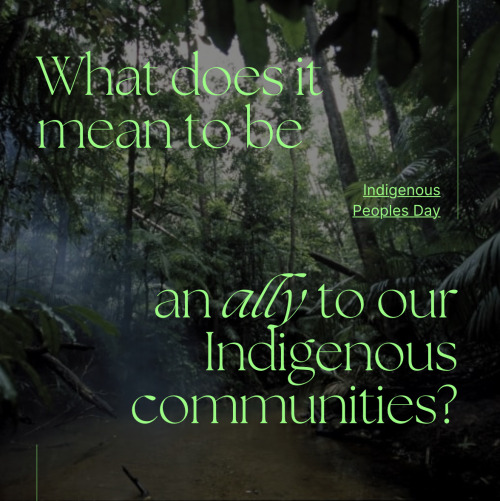
452 posts
The Crucial Need For Indigenous Health Care: Honouring Cultural Identity And Overcoming Disparities
The Crucial Need for Indigenous Health Care: Honouring Cultural Identity and Overcoming Disparities
Shaina Tranquilino
October 5, 2023

Indigenous communities around the world have rich cultural traditions spanning thousands of years. Yet, these communities often face significant health disparities compared to non-Indigenous populations. Addressing this imbalance requires recognizing the importance of Indigenous health care, not only as a means to improve well-being but also as a way to honour their unique cultural identity. In this blog post, we will explore the significance of Indigenous health care and highlight the steps necessary to bridge the gap in healthcare access and outcomes.
Preserving Cultural Identity:
Indigenous people possess distinct knowledge systems regarding wellness, healing practices, and medicinal plants that are deeply rooted in their culture and ancestral wisdom. By incorporating traditional healing methods into mainstream healthcare services, we can foster an environment that respects and preserves their cultural identity. This integration enables Indigenous individuals to feel more comfortable seeking medical assistance while ensuring their treatment aligns with their beliefs and values.
Holistic Approach:
Indigenous health care emphasizes holistic approaches to well-being, considering physical, mental, emotional, and spiritual aspects as interconnected elements of one's overall health. Traditional healers or medicine people play a vital role in delivering culturally appropriate care by addressing not only symptoms but also underlying causes of illnesses. Incorporating these holistic approaches into mainstream healthcare can enhance patient-centred care models for all populations.
Overcoming Health Disparities:
Health disparities faced by Indigenous communities are multifaceted, stemming from historical trauma, social determinants of health, limited access to quality healthcare facilities, discrimination within the healthcare system, and inadequate funding for Indigenous-specific programs. Recognizing these barriers is crucial in designing policies and interventions aimed at reducing such inequities.
Culturally Competent Healthcare Providers:
To deliver effective Indigenous health care, it is essential to train healthcare providers on culturally competent practices. Culturally competent care acknowledges diverse perspectives and ensures patients' cultural beliefs and practices are respected. By fostering empathy, understanding, and inclusivity among healthcare professionals, we can cultivate an environment where Indigenous patients feel comfortable seeking care and have their unique needs met.
Collaboration and Community Engagement:
Engaging Indigenous communities in the decision-making process regarding their own health is paramount. Collaboration between governments, local authorities, healthcare providers, researchers, and Indigenous leaders can help identify community-specific health challenges and develop tailored interventions. Active involvement of Indigenous peoples in designing healthcare policies ensures that solutions are culturally appropriate and sustainable.
Investing in Infrastructure:
Improving infrastructure within Indigenous communities is essential to enhance access to quality healthcare services. This includes increasing the number of clinics, hospitals, and healthcare professionals within these areas while prioritizing culturally sensitive environments that respect traditional healing practices. Additionally, improving transportation systems and telehealth initiatives can bridge geographical barriers faced by remote communities.
Recognizing the importance of Indigenous healthcare goes beyond addressing disparities; it is about honouring diverse cultures, preserving ancestral knowledge, and ensuring equitable access to quality healthcare for all. By valuing holistic approaches to well-being, investing in infrastructure development, promoting cultural competence among healthcare providers, and engaging with Indigenous communities directly, we can take significant strides towards achieving health equity for Indigenous populations worldwide. Only through collective efforts can we forge a path towards a future where every individual's right to good health is upheld without compromising their cultural identity.
More Posts from Harmonyhealinghub
The Power of Accurate Representation: Advocating for Indigenous People in the Media
Shaina Tranquilino
October 7, 2023

In a world that thrives on media and entertainment, accurate representation is crucial for fostering understanding, breaking stereotypes, and promoting equality. Unfortunately, Indigenous people have historically been misrepresented or underrepresented in the media. However, as society evolves and becomes more inclusive, it is time to turn the spotlight onto their rich cultures, histories, and contemporary issues. In this blog post, we will explore how Indigenous people are currently portrayed in the media and discuss effective strategies to advocate for accurate representation.
1. Understanding the Current Misrepresentation:
Indigenous communities often face harmful stereotypes perpetuated by mainstream media. They are frequently depicted as primitive, exoticized caricatures or reduced to historical figures rather than acknowledging their vibrant existence today. This misrepresentation not only reinforces negative biases but also erases their contributions to society.
2. Amplifying Authentic Voices:
The first step towards accurate representation lies in amplifying authentic Indigenous voices within the media industry. By diversifying decision-making roles and leadership positions in film production companies, newsrooms, and advertising agencies, we can ensure that stories are told from an insider's perspective with cultural sensitivity.
3. Collaborative Storytelling:
Collaboration between Indigenous communities and media professionals is key to portraying accurate narratives. Encouraging partnerships and co-production models allows for shared ownership of stories while respecting cultural protocols and ensuring accuracy.
4. Challenge Stereotypes:
Advocacy begins by challenging stereotypes head-on through public discourse and education initiatives. Engage with social media campaigns calling out harmful portrayals while highlighting positive examples of authentic representation. Grassroots movements like #NotYourMascot challenge appropriation in sports imagery.
5. Support Independent Indigenous Media:
Independent platforms dedicated to showcasing diverse Indigenous voices exist around the world; supporting them financially and sharing their content helps break down barriers imposed by mainstream media gatekeepers.
6. Advocacy Through Education:
Promoting accurate representation requires educating both media professionals and the general public. Encourage media literacy programs that teach critical thinking skills to analyze stereotypes, biases, and the importance of authentic representation.
7. Cultural Competency Training:
Media organizations should prioritize cultural competency training for their employees to foster a deeper understanding of Indigenous cultures, histories, and contemporary issues. This will lead to more informed storytelling and prevent harmful misrepresentations.
The media has an immense influence on society's perception of Indigenous people. By advocating for accurate representation through collaboration, challenging stereotypes, supporting independent platforms, promoting education, and implementing cultural competency training, we can ensure that Indigenous communities are portrayed in a respectful and authentic manner. It is our collective responsibility to advocate for accurate representation in the media to create a world where diverse voices are celebrated and embraced.
Finding the Power of Voice: Lessons from Laurie Halse Anderson's "Speak"
Shaina Tranquilino
October 22, 2023

In a society where silence is often seen as weakness, "Speak" by Laurie Halse Anderson serves as an empowering testament to the strength that can be found in speaking up. This poignant novel delves deep into the life of Melinda Sordino, a high school freshman who becomes an outcast after experiencing a traumatic event. Through her journey, readers are not only exposed to the harsh realities faced by many teenagers but are also provided with invaluable lessons on self-discovery, resilience, and the importance of finding one's voice.
Lesson 1: The Power of Silence: At first glance, it may seem contradictory that a book about speaking revolves around silence. However, "Speak" highlights the significance of silence as a psychological defense mechanism. Melinda's refusal to speak acts as a barrier between herself and others, shielding her from confronting her trauma head-on. This lesson emphasizes the need for empathy and understanding when encountering individuals who might choose silence as their means of communication.
Lesson 2: The Impact of Trauma: Through Melinda's experience, "Speak" tackles the sensitive topic of trauma and its profound effect on mental health. The author illustrates how a single traumatic event can result in PTSD (post-traumatic stress disorder), depression, and anxiety. By shedding light on these struggles, Anderson urges readers to recognize and empathize with those silently battling their own demons.
Lesson 3: Self-Expression through Art: Art plays an integral role in helping Melinda find solace amidst her pain. She discovers an outlet for self-expression through her art class, allowing her emotions to manifest visually onto canvas. This teaches us that creativity can serve as a powerful tool for healing and personal growth when words fail us.
Lesson 4: The Importance of Speaking Up: As the title suggests, one central theme throughout "Speak" is the significance of finding and using one's voice. Melinda's eventual decision to break her silence leads not only to her own healing but also to justice being served for what she endured. This lesson serves as a reminder that our voices have the power to effect change, whether it be on an individual or societal level.
Lesson 5: The Value of Friendship: As Melinda navigates through her tumultuous high school experience, she finds solace in unexpected friendships. "Speak" sheds light on the importance of genuine connections and support systems during difficult times. It reminds us that true friends are those who empathize, listen without judgment, and encourage personal growth.
Laurie Halse Anderson's "Speak" stands as a powerful literary work that explores themes of trauma, resilience, and self-discovery. Through Melinda Sordino's journey from silence to speaking up, readers are reminded of the strength that lies within each of us. By addressing important issues faced by teenagers today and teaching valuable life lessons, this novel continues to resonate with readers young and old alike, encouraging them to find their voice and embrace their personal power.
Reflecting on Colonialism: Indigenous Peoples' Day as a Reminder of Ongoing Power Structures
Shaina Tranquilino
October 8, 2023

In recent years, the celebration of Indigenous Peoples' Day has gained momentum as an alternative to Columbus Day. This shift in perspective prompts us to reflect not only on the historical events that unfolded centuries ago but also on colonialism's enduring impact on our lives today. Dr. Jonathan Rosa eloquently captures this sentiment by highlighting how colonialism is not just a thing of the past but an ongoing global formation of power that shapes our pasts, presents, and futures.
Understanding Colonialism as an Ongoing Global Formation of Power:
Colonialism was marked by European powers establishing dominance over Indigenous communities across continents through conquest, exploitation, and cultural assimilation. The effects of colonization were far-reaching - from economic exploitation and land dispossession to the erasure of cultural identities and systemic marginalization.
However, framing colonialism solely as a historical event can obscure its contemporary manifestations. As Dr. Rosa suggests, it is crucial to recognize colonialism as an ongoing process that continues to shape power structures worldwide.
Impacts on Pasts:
The legacies of colonialism are still deeply ingrained in societies around the globe. From distorted historical narratives to unequal power dynamics between nations, colonialism's impact reverberates through time. Acknowledging these effects allows us to critically examine our shared history and work towards rectifying past injustices.
Presents Shaped by Colonial Narratives:
Colonialism has left lasting imprints on our present reality. Systemic inequalities persist within societies affected by colonization, perpetuating disparities in income distribution, education, healthcare access, and representation. By understanding these connections between the present and the past, we can challenge existing power structures and strive for social justice.
Indigenous Resilience:
While acknowledging the immense harm caused by colonialism, we must also celebrate the resilience and resistance shown by Indigenous peoples. Indigenous communities around the world have fought tirelessly to preserve their cultures, languages, and traditions despite centuries of oppression. Recognizing their strength and resilience is an essential step in challenging the ongoing power structures that perpetuate marginalization.
Shaping Futures:
Understanding colonialism as an ongoing global formation of power allows us to envision a more equitable future. By dismantling existing power structures and advocating for Indigenous rights, we can collectively work towards a society that respects diversity, fosters inclusion, and values decolonial perspectives.
As we observe Indigenous Peoples' Day, it is crucial to remember that colonialism is not just a historical event but an ongoing force that shapes our pasts, presents, and futures. Dr. Jonathan Rosa's insightful quote reminds us to critically examine the pervasive impact of colonization on societies worldwide. By acknowledging this reality, celebrating Indigenous resilience, and actively working toward decolonization, we can contribute to building a more just and inclusive world for all.
Understanding the Power of Communication in Human Behaviour
Shaina Tranquilino
October 20, 2023

Communication is an essential aspect of our lives. It helps us express ourselves, connect with others, and understand the world around us. While we often think of communication as verbal or written exchanges, it's crucial to recognize that all behaviour communicates something. From a simple smile to a complex action, every behaviour serves as a medium through which individuals express their thoughts, emotions, needs, and desires. In this blog post, we'll delve into the fascinating concept that all behaviour is communication.
1. Non-Verbal Communication:
Non-verbal cues play a significant role in conveying messages without using words explicitly. Facial expressions, body language, gestures, eye contact – these are all forms of non-verbal communication that can reveal someone's mood, intentions, or emotional state. For instance, crossed arms might indicate defensiveness or disagreement while a warm smile can signify friendliness and openness.
2. Unconscious Communication:
Not all communication is intentional or conscious. At times, people communicate unconsciously through behaviour they may not even be aware of. Psychologists refer to this phenomenon as leakage – when hidden feelings or thoughts inadvertently manifest themselves through actions such as fidgeting or nervous laughter. By paying attention to these subtle cues, we can gain insights into what others may truly be experiencing beneath the surface.
3. Communicating Needs:
Behavioural patterns often reflect unmet needs or desires that individuals struggle to articulate verbally. A child throwing a tantrum at a grocery store might be communicating hunger or fatigue rather than simply misbehaving. Similarly, adults who exhibit passive-aggressive behaviour may be expressing dissatisfaction or frustration indirectly instead of openly discussing their concerns.
4. Social Context and Cultural Influences:
Behaviour also has cultural and contextual dimensions that influence how it is interpreted. Different cultures have distinct norms for acceptable behaviour and varying levels of emotional expressivity. Therefore, understanding someone's behaviour requires considering their cultural background and the environment in which they are interacting.
5. Developmental Stages:
Behavioural communication evolves as we grow and mature. Infants communicate primarily through crying, while toddlers start using words to express themselves. As individuals enter adolescence, verbal and non-verbal expressions become more complex and nuanced. Throughout our lives, our behaviours continue to adapt and change based on various factors such as experiences, relationships, and personal growth.
Recognizing that all behaviour is communication can profoundly impact how we understand ourselves and others. By paying attention to both subtle non-verbal cues and intentional actions, we can develop a deeper empathy for those around us. This understanding allows us to foster better connections, resolve conflicts effectively, and create an environment that encourages open communication. So let's be mindful of the messages we send through our behaviour and strive to decode the behaviour of others with compassion and curiosity.
Healing Your Inner Child: A Journey Towards Emotional Wholeness
Shaina Tranquilino
October 17, 2023

As we navigate through life's challenges and responsibilities, many of us carry unresolved emotional wounds from our past. These unhealed wounds often originate from childhood experiences, shaping our beliefs, behaviours, and relationships as adults. The concept of healing your inner child offers a powerful way to address these deep-rooted issues, paving the path towards emotional wholeness and self-acceptance. In this blog post, we will explore practical steps you can take to embark on this transformative journey.
1. Acknowledge the Existence of Your Inner Child:
The first step in any healing process is acknowledging that there is an inner child within you who requires attention and care. Recognize that your younger self still exists within you, carrying all those emotions and experiences. Allow yourself to reconnect with this part of you without judgment or criticism.
2. Create a Safe Space for Self-Exploration:
Creating a safe space for self-reflection is crucial when delving into your inner child's healing process. Find a peaceful setting where you feel comfortable expressing your emotions freely. Consider journaling, meditation, or seeking professional support to help guide you through this introspective journey.
3. Identify Past Traumas and Limiting Beliefs:
Take time to reflect on your childhood experiences and identify any significant traumas or negative events that might have impacted your psyche. Explore how these incidents may have shaped your beliefs about yourself, others, and the world around you. By gaining awareness of these limiting beliefs, you can begin to challenge them effectively.
4. Practice Self-Compassion:
Healing your inner child requires showing compassion towards yourself in ways that perhaps weren't offered during your formative years. Embrace self-care practices such as nurturing activities, affirmations, forgiveness exercises (including forgiving yourself), and treating yourself with love and kindness whenever possible.
5. Reconnect with Your Inner Child:
Allow yourself to tap into the childlike wonder and innocence that resides within you. Engage in activities that evoke joy, creativity, and playfulness. Embrace hobbies or interests that once brought you happiness as a child. By nurturing this connection, you are providing your inner child with the love and attention they may have lacked.
6. Reparenting Yourself:
Reparenting involves fulfilling your own emotional needs by giving yourself the care and support you longed for during childhood. Be attentive to your feelings and emotions, validating them instead of dismissing or suppressing them. Cultivate healthy boundaries, self-discipline, and self-compassion as part of this healing process.
7. Seek Professional Support if Needed:
Sometimes, healing deep-seated wounds requires professional guidance from therapists specializing in inner child work or trauma recovery. These professionals can offer valuable insights, techniques, and tools tailored to your unique journey towards healing your inner child.
Healing your inner child is an ongoing process that requires patience, compassion, and commitment to self-discovery. By acknowledging their existence, creating a safe space for exploration, identifying past traumas and limiting beliefs, practicing self-compassion, reconnecting with your inner child, reparenting yourself, and seeking professional support when necessary – you can pave the way towards emotional wholeness and lead a more authentic life filled with love and acceptance.